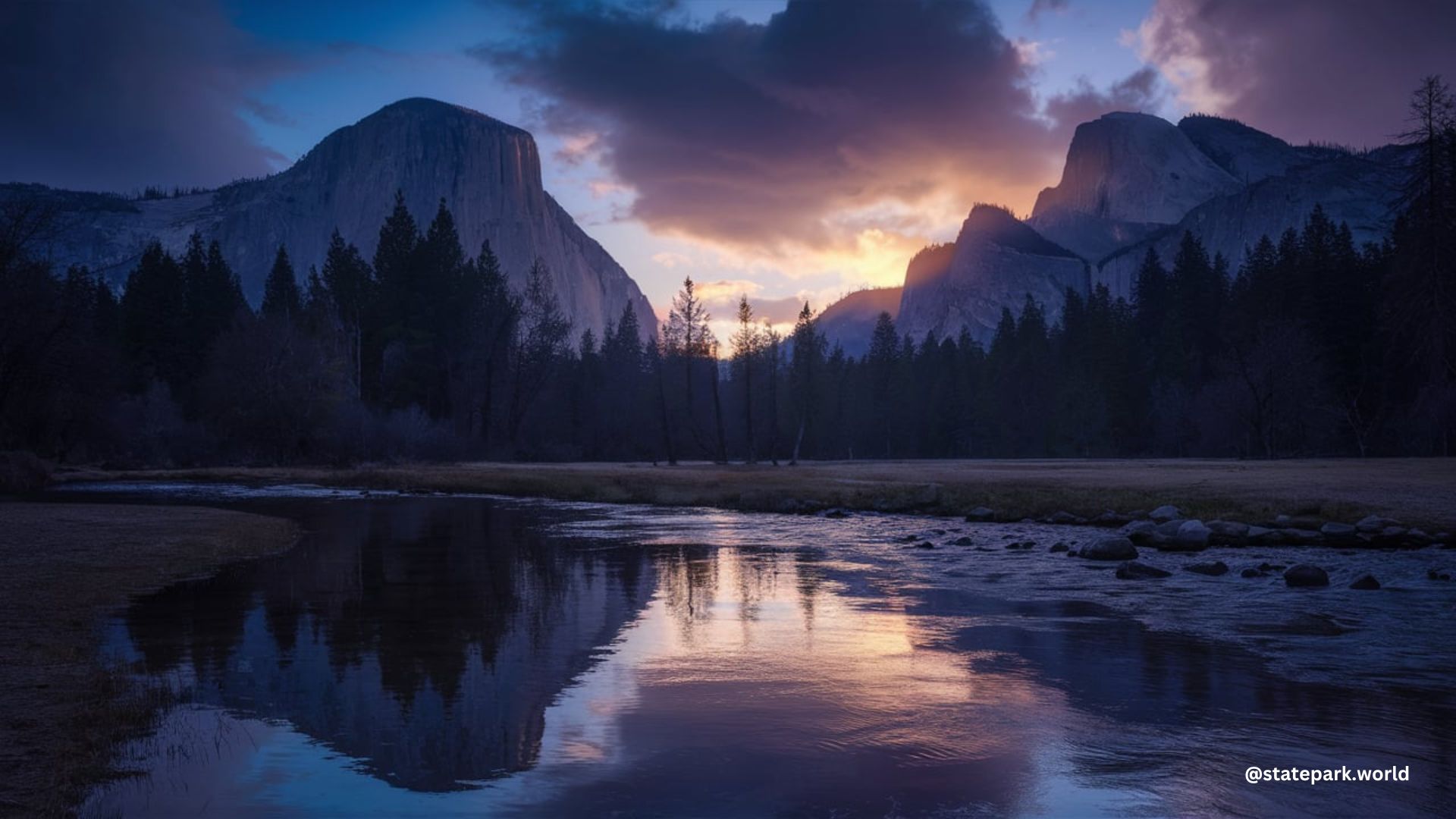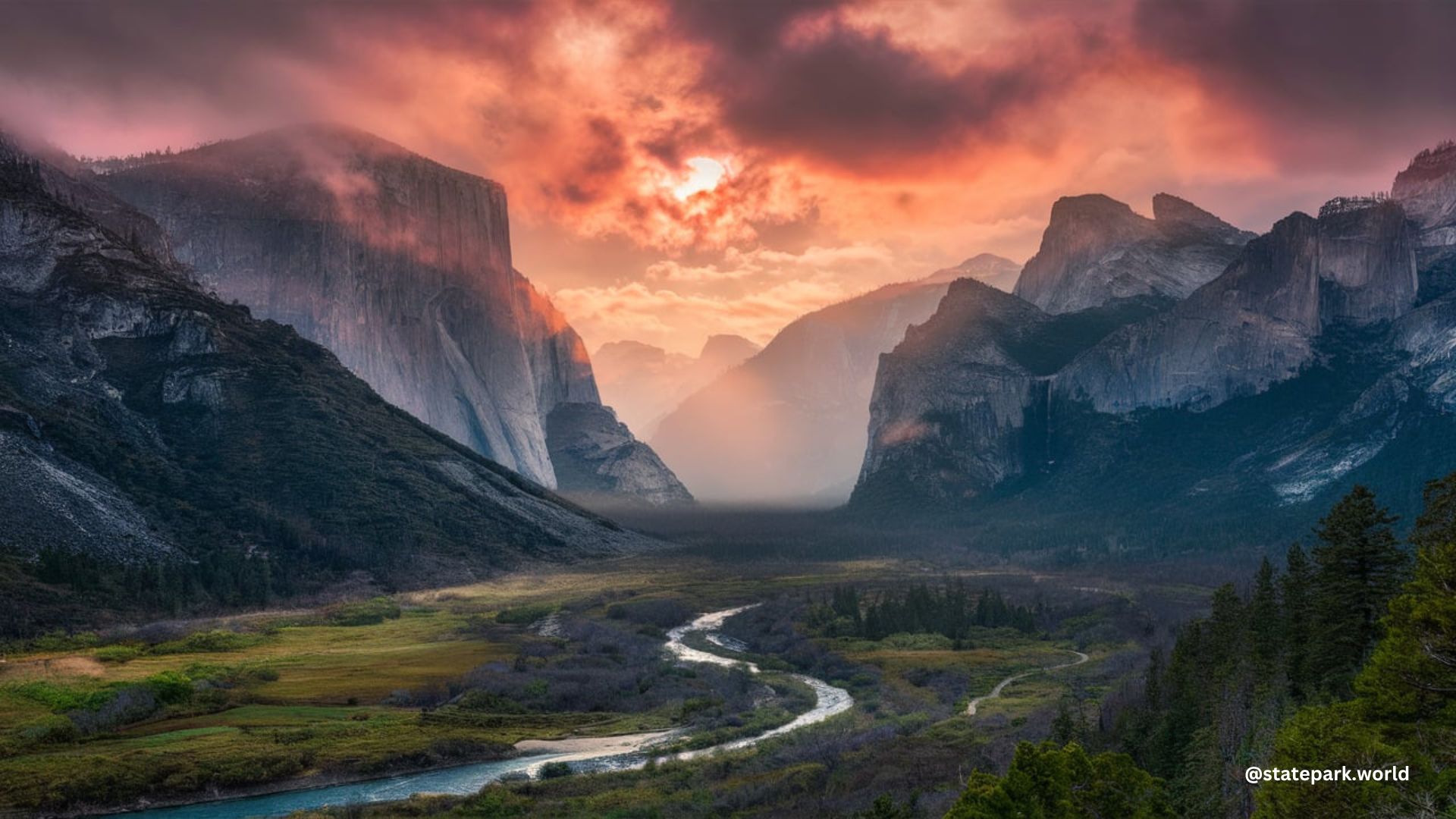Yosemite National Park is renowned for its breathtaking natural beauty, from the towering granite cliffs of El Capitan to the cascading waterfalls of Yosemite Falls. However, the park’s climate is just as diverse and captivating as its iconic landscapes. As a State Park Touring Enthusiast, understanding the unique climate of Yosemite is essential for planning your visit and appreciating the park’s delicate ecosystems.
The Mediterranean Climate of Yosemite
Yosemite National Park experiences a Mediterranean climate, characterized by mild, wet winters and hot, dry summers. This climate pattern is influenced by the park’s location on the western slope of the Sierra Nevada mountain range, which acts as a barrier to the moist air masses from the Pacific Ocean.
During the winter months, Yosemite receives the majority of its annual precipitation, with snowfall accumulating at higher elevations. The park’s lower elevations, such as Yosemite Valley, typically experience milder temperatures, with average daily highs ranging from 46°F (8°C) to 90°F (32°C).
In contrast, the higher elevations of Yosemite, like Tuolumne Meadows at 8,600 feet (2,600 m), experience a much cooler climate, with average daily temperatures ranging from 25°F (-4°C) to 53°F (12°C). This variation in temperature and precipitation is a result of the park’s diverse topography and elevation.
Vegetation Zones and Climate Conditions

Yosemite National Park is home to five major vegetation zones, each with its own distinct climate conditions:
- Chaparral and Oak Woodland: This zone, found at the lowest elevations, is characterized by hot, dry summers and mild, wet winters.
- Lower Montane Forest: This zone, located at mid-elevations, experiences a more moderate climate, with cooler summers and wetter winters.
- Upper Montane Forest: This zone, found at higher elevations, is characterized by a shorter growing season, cooler temperatures, and increased precipitation, often in the form of snow.
- Subalpine Zone: This zone, located near the tree line, is characterized by a harsh, alpine climate, with short, cool summers and long, snowy winters.
- Alpine Zone: This zone, found at the highest elevations, is characterized by a true alpine climate, with extremely cold temperatures, high winds, and limited precipitation.
The distribution of these vegetation zones is directly influenced by the park’s climate, with precipitation and temperature being the primary drivers.
Seasonal Variations and Visitor Experiences
The seasonal variations in Yosemite’s climate have a significant impact on the park’s visitor experiences. During the summer months, the park’s lower elevations can be hot and dry, with temperatures reaching the 90s Fahrenheit (32°C). This can make activities like hiking and rock climbing more challenging, and visitors should be prepared with proper hydration and sun protection.
In contrast, the winter months in Yosemite can be quite cold, with heavy snowfall at higher elevations. This creates a winter wonderland, perfect for activities like cross-country skiing, snowshoeing, and enjoying the park’s iconic waterfalls, which may be partially or fully frozen.
The shoulder seasons of spring and fall offer a more moderate climate, with milder temperatures and reduced crowds. This can be an ideal time to explore the park’s diverse ecosystems and witness the changing foliage.
Climate Change and Yosemite’s Future
Climate change is having a significant impact on Yosemite National Park, with far-reaching consequences for the park’s ecosystems and visitor experiences. Warmer spring temperatures are causing the park’s waterfalls to dry out earlier in the season, and declining snowpack has far-reaching impacts beyond the park’s borders.
Increased fire activity, shrinking glaciers, tree die-offs, and shifting ecosystems are all consequences of climate change in Yosemite. These changes are not only affecting the park’s natural resources but also the experiences of the millions of visitors who come to Yosemite each year.
As a State Park Touring Enthusiast, it’s important to be aware of these climate-related changes and consider their impact on your visit. Simple choices, such as reducing carbon emissions and following park guidelines, can help minimize the human impact on Yosemite’s climate and ensure the park’s natural beauty is preserved for generations to come.
Conclusion
Yosemite National Park’s climate is a complex and ever-evolving system, shaped by the park’s diverse topography and elevation. From the hot, dry summers of the lower elevations to the harsh, alpine conditions of the high country, Yosemite’s climate offers a wide range of experiences for visitors.
As climate change continues to impact the park, it’s essential for State Park Touring Enthusiasts to understand the unique climate of Yosemite and how it affects the park’s ecosystems and visitor experiences. By being informed and making sustainable choices, we can help preserve the natural wonder of Yosemite for generations to come.

